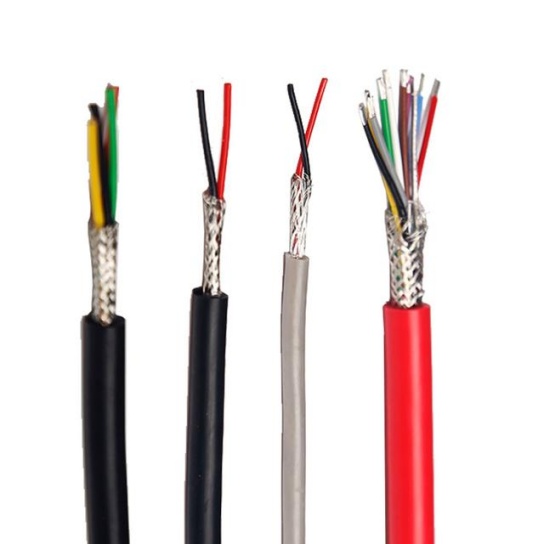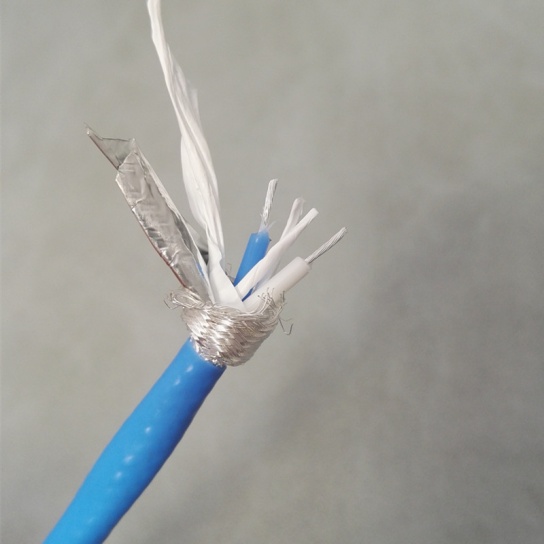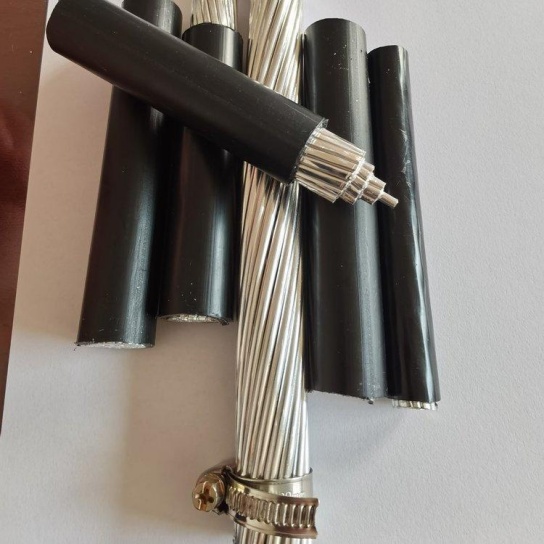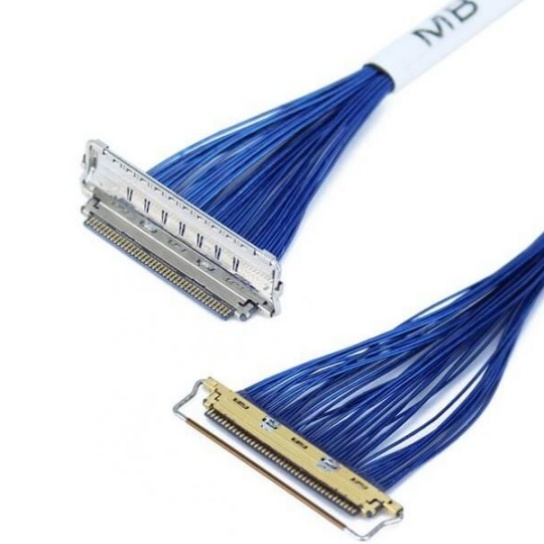High-Temperature Aircraft Cable Assemblies for Engine Compartments
Aircraft engine compartments are among the most demanding environments in aviation. Exposed to extreme temperatures, constant vibration, chemical exposure, and strict safety regulations, every component within this space must deliver uncompromising reliability—especially high-temperature aircraft cable assemblies. As the lifeline of electrical and signal transmission for critical systems (e.g., fuel control, ignition, and sensor networks), these cable assemblies are not just accessories but essential elements that directly impact flight safety, engine performance, and long-term operational efficiency. For aerospace engineers, maintenance teams, and aircraft manufacturers, understanding the unique capabilities of high-temperature aircraft cable assemblies is critical to selecting solutions that meet the rigorous demands of engine compartment operations.
1. The Unique Challenges of Engine Compartments: Why High-Temperature Cables Are Non-Negotiable
Engine compartments operate in conditions that would degrade standard electrical cables within hours. Temperatures can swing from -65°C (-85°F) during cold starts to over 260°C (500°F) during continuous operation—with peak temperatures reaching 315°C (600°F) near exhaust manifolds. Beyond heat, cables must withstand:
- Intense Vibration: Engine rotation and turbulence generate vibrations ranging from 10Hz to 2000Hz, which can loosen connections or fracture conductors in low-quality cables.
- Chemical Exposure: Hydraulic fluids, jet fuel, lubricants, and deicing agents are corrosive to standard insulation materials, leading to insulation breakdown and short circuits.
- Mechanical Stress: Tight spaces in engine bays require cables to bend and flex without damage, while exposure to debris (e.g., metal shavings) demands abrasion resistance.
Standard aircraft cables—designed for cooler areas like cabins or avionics bays—cannot endure these conditions. High-temperature aircraft cable assemblies are engineered specifically to address these challenges, ensuring uninterrupted power and signal flow even in the harshest engine environments.
2. Key Performance Specifications of High-Temperature Aircraft Cable Assemblies
To meet engine compartment requirements, high-temperature aircraft cable assemblies must adhere to strict performance metrics. These specifications are not just industry standards but prerequisites for aerospace certification (e.g., FAA, EASA):
2.1 Temperature Resistance
The core defining feature of these cables is their ability to operate at extreme temperatures. Most high-temperature aircraft cable assemblies are rated for continuous use at 200°C (392°F) to 260°C (500°F), with some premium variants capable of withstanding short-term exposure to 315°C (600°F). This resistance is achieved through advanced insulation and conductor materials, which prevent thermal degradation (e.g., insulation melting, conductor oxidation) over thousands of flight hours.
2.2 Electrical Stability
In engine compartments, electrical interference and voltage fluctuations are common. High-temperature cables must maintain stable electrical performance, including:
- Insulation Resistance: A minimum of 100 MΩ at 25°C (77°F) to prevent current leakage.
- Dielectric Strength: Ability to withstand 1500V AC for 60 seconds without breakdown, ensuring safe operation even in high-voltage systems.
- Low Signal Attenuation: For data-carrying cables (e.g., sensor cables), signal loss must be less than 1dB per meter at operating temperatures, ensuring accurate data transmission to flight control systems.
2.3 Mechanical Durability
Vibration, bending, and abrasion demand robust mechanical design:
- Tensile Strength: Conductors must withstand a minimum of 150N of force without breaking, preventing damage during installation or maintenance.
- Flex Life: Cables should endure 10,000+ bending cycles (per ASTM D4734) without conductor or insulation failure, critical for cables routed around moving engine parts.
- Abrasion Resistance: Insulation must resist wear from contact with metal surfaces or debris, meeting SAE AS22759 standards for abrasion testing.
2.4 Chemical Compatibility
High-temperature aircraft cable assemblies must resist degradation from aerospace fluids, including:
- Jet fuel (e.g., JP-8, Jet A-1)
- Hydraulic fluids (e.g., Skydrol LD-4)
- Deicing solutions (e.g., ethylene glycol)
- Lubricating oils (e.g., MIL-PRF-23699)
Testing per ASTM D471 involves immersing cables in these fluids at 121°C (250°F) for 70 hours; acceptable performance requires less than 20% change in insulation thickness or tensile strength.
3. Materials: The Backbone of High-Temperature Performance
The reliability of high-temperature aircraft cable assemblies starts with material selection. Every component—from conductors to insulation to jacketing—is chosen for its ability to withstand engine compartment stress:
3.1 Conductors
Conductors are the heart of cable assemblies, responsible for transmitting power and signals. High-temperature cables use:
- Tinned Copper Strands: Tinning (a thin layer of tin) prevents copper oxidation at high temperatures, ensuring consistent conductivity. Stranded conductors (vs. solid) improve flexibility, reducing fatigue from vibration.
- Nickel-Plated Copper: For extreme temperatures (260°C+), nickel plating provides superior oxidation resistance. Nickel-plated conductors are common in cables near exhaust systems or ignition components.
- Copper-Clad Aluminum (CCA): For weight-sensitive applications, CCA offers 60% the conductivity of copper at 40% the weight, with nickel plating for high-temperature protection.
3.2 Insulation
Insulation is the first line of defense against heat, chemicals, and electrical leakage. The most widely used insulation materials for high-temperature aircraft cables include:
- Polytetrafluoroethylene (PTFE): Rated for -200°C to 260°C (-328°F to 500°F), PTFE is chemically inert (resists all aerospace fluids), non-flammable, and has excellent dielectric properties. It is ideal for cables in direct contact with hot engine parts.
- Perfluoroalkoxy (PFA): A variant of PTFE, PFA offers better flexibility and melt flow, making it easier to extrude into thin insulation layers. It has the same temperature and chemical resistance as PTFE, suitable for tight spaces in engine bays.
- Silicone Rubber: Rated for -60°C to 200°C (-76°F to 392°F), silicone rubber is highly flexible and resistant to moisture and ozone. It is often used in cables that require frequent bending (e.g., cables connected to moving valves).
3.3 Jacketing (Optional)
For additional protection in high-abrasion or high-chemical environments, some cable assemblies include a jacketing layer:
- Fluorinated Ethylene Propylene (FEP): Rated for -200°C to 200°C, FEP adds abrasion resistance while maintaining flexibility.
- Polyimide (PI): For extreme temperatures (up to 315°C), PI jacketing provides exceptional thermal stability but is stiffer than FEP or PTFE.
4. Manufacturing Standards and Testing: Ensuring Aerospace Compliance
High-temperature aircraft cable assemblies are not just built to perform—they are built to comply with global aerospace standards. These standards ensure consistency, safety, and reliability across all products:
4.1 Key Industry Standards
- SAE AS22759: The primary standard for fluoropolymer-insulated aircraft cables, covering temperature ratings, insulation thickness, and electrical performance.
- ISO 19642: Specifies requirements for aircraft electrical cables, including mechanical testing (flex life, tensile strength) and chemical resistance.
- MIL-DTL-24643: A U.S. military standard for high-temperature cables used in military aircraft, with stricter testing requirements for vibration and shock.
- ASTM D2671: Defines test methods for insulation materials, including thermal aging, chemical resistance, and dielectric strength.
4.2 Rigorous Testing Protocols
Before reaching customers, high-temperature aircraft cable assemblies undergo comprehensive testing to validate performance:
- High-Temperature Aging Test: Cables are exposed to 260°C (500°F) for 1000 hours. After testing, insulation resistance and tensile strength must remain within 80% of initial values.
- Vibration Test: Cables are mounted on a shaker table and subjected to 10Hz–2000Hz vibrations (per MIL-STD-883H) for 24 hours. No conductor breakage or insulation damage is allowed.
- Chemical Immersion Test: Cables are immersed in jet fuel or hydraulic fluid at 121°C (250°F) for 70 hours. Insulation must show no cracking, swelling, or discoloration.
- Electrical Performance Test: Cables are tested for insulation resistance (100 MΩ minimum), dielectric strength (1500V AC for 60 seconds), and signal attenuation (less than 1dB/meter).
- Flammability Test: Per FAR 25.853, cables must self-extinguish within 60 seconds after removal from a flame, with no dripping of flaming material.
5. How to Select the Right High-Temperature Aircraft Cable Assemblies
Choosing the correct high-temperature aircraft cable assemblies for engine compartments requires aligning product specifications with application needs. Here are key factors to consider:
5.1 Match Temperature Ratings to Application
- For areas near exhaust manifolds (260°C–315°C), select PFA or PI-insulated cables with nickel-plated conductors.
- For general engine bay areas (200°C–260°C), PTFE or FEP-insulated cables are sufficient.
- For cold-start environments (-65°C to 200°C), silicone rubber insulation offers better flexibility at low temperatures.
5.2 Prioritize Mechanical Durability
If cables are routed near moving parts (e.g., fan blades, valves), choose stranded conductors and flexible insulation (e.g., PFA, silicone rubber) to resist vibration fatigue. For high-abrasion areas (e.g., near metal brackets), add an FEP jacketing layer.
5.3 Verify Compliance with Standards
Always select cables certified to SAE AS22759, ISO 19642, or MIL-DTL-24643. Certification ensures the product has passed rigorous testing and meets aerospace safety requirements.
5.4 Consider Customization
Engine compartments have unique space constraints and system requirements. Look for manufacturers that offer custom cable assemblies, including:
- Custom conductor gauges (16AWG to 26AWG)
- Custom lengths (from 0.5m to 50m)
- Custom terminations (e.g., crimped pins, soldered connectors)
- Shielding options (e.g., tinned copper braid) for EMI/RFI protection
6. FRS: Your Trusted Partner for High-Temperature Aircraft Cable Assemblies
When it comes to high-temperature aircraft cable assemblies for engine compartments, FRS stands out as a leading manufacturer with a proven track record of excellence in the aerospace industry. For over 15 years, we have been designing and producing cable assemblies that meet the strictest performance, safety, and compliance standards—empowering aircraft manufacturers, MRO providers, and military organizations to keep their fleets operating reliably.
At FRS, we prioritize quality at every stage of production:
- Premium Materials: We use only industry-leading materials, including PTFE, PFA, and nickel-plated copper, sourced from certified suppliers to ensure consistency and performance. Every batch of material is tested for thermal stability, chemical resistance, and electrical properties before production.
- Compliance-Driven Manufacturing: Our facilities are certified to ISO 9001 and AS9100 (the gold standard for aerospace quality management), and all our high-temperature cable assemblies meet or exceed SAE AS22759, ISO 19642, and MIL-DTL-24643 standards. We maintain full traceability for every product, from raw materials to finished assemblies.
- Rigorous Testing: Our in-house testing laboratory is equipped to perform all critical tests, including high-temperature aging, vibration, chemical immersion, and electrical performance. Every cable assembly undergoes 100% testing before shipment, ensuring zero defects.
- Custom Solutions: We understand that no two engine compartments are the same. Our team of aerospace engineers works closely with customers to design custom cable assemblies tailored to specific temperature, space, and performance requirements. Whether you need a ultra-flexible cable for tight bends or a flame-retardant assembly for high-heat zones, we deliver solutions that fit.
- Global Support: FRS provides end-to-end support, from initial design consultation to after-sales service. Our team is available 24/7 to address technical questions, provide replacement parts, and ensure your operations run smoothly.
For aircraft engine compartments where failure is not an option, FRS high-temperature aircraft cable assemblies deliver the reliability, durability, and performance you need. Partner with FRS today to experience the difference of a manufacturer that puts your safety and success first.






